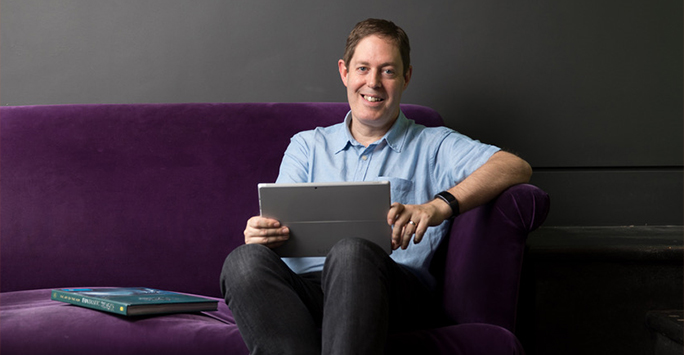From fairly early on I knew I wanted to work in science. I always had a natural thing for physics and maths and have always enjoyed technical things. I built a lot of Airfix kit models and played with a lot of Lego and I was very much into the sci-fi movies of the era – Star Wars, Aliens andBlade Runner. But I had no notion then of working in the movies. If I'd known there was going to be a visual effects industry I might have thought about it, but at the time there wasn’t such a thing. I’m originally from Chelmsford in Essex and I chose to study in Liverpool because the course looked great and the atmosphere felt good. I’ve been back recently and the city’s changed a great deal since I was there in the 80s. I lived there for seven years getting both my degrees, taking my first job there and even meeting my wife. It had a big influence on my life. I was a fairly diligent student but outside of my studies I was also heavily involved in the Role Playing Games Society. It was something I picked up from friends at halls and was a great way to meet new people. It’s still something I enjoy today.
From superconductors to special effects
I loved the Physics course because it suited my analytical mind and was quite practical. There’s no doubt my degree and PhD helped me develop analytical skills, problem solving and also presentation skills, which stood me in good stead for speaking at conferences and dealing with clients.
My final-year project was on high-temperature superconductors and when I graduated there was space to carry on that work at PhD-level. I learned to programme and a lot about building equipment, which definitely helps me with my current job. When I finished my PhD I went to work for ICI and later helped set up a new research department at London South Bank University. I spent a good few years there doing academic and industrial research on superconductors and dielectric materials.
My move into visual effects started from watching TV shows – particularly Babylon 5, which was one of the first to use digital effects on a big scale. I read some articles and looked at the software involved and started tinkering around with it. I started to get a real feel for it and did a couple of little freelance jobs on the side and eventually applied to Framestore, who had just done the first season of Walking with Dinosaurs. To my surprise, they gave me a job.
At this point in the UK it was mainly TV and commercial work. There wasn’t much of a film visual effects industry. My first project at Framestore was a TV miniseries called Dinotopia, which won an Emmy. After that I moved into films and the first one I did was Harry Potter and the Chamber of Secrets, which is when the visual effects industry kicked off in London big time. When I started as a modeller at Framestore, I would be building assets – bits of a city or some dinosaur armour. There is a certain technical element to it but it’s still an artistic thing. You are sculpting or manipulating things to look like a piece of concept art which might only be viewing something from one direction and you have to interpret it across full 3D space so that it works as it would in the real world.
Obeying the laws of gravity
I’ve enjoyed so many projects during my time – from Dark Knight to the first Guardians of the Galaxy and Iron Man 3. Last year working onAlien Covenant was going back to a subject matter that I grew up with. I really enjoyed the original Alien and getting to work on a Ridley Scott movie was something a bit special. More recently I helped out on Kingsman: Golden Circle and on some of the shoots for Paddington 2.
A real career highlight was working on Gravity. It was the ideal project for me because it was so physically based in science. The director was really keen that people watching would feel like they were in space and this was real. We could take some liberties here and there but everything started from what would really happen, how this would work with real physics. Having a knowledge of mechanics, dynamics and what space is like really helped with that. I was very gratified when the film came out that NASA astronauts put together a little video congratulating us on our work and how realistic it was.
It was such a ground-breaking project. Being so heavily involved in it, even being on set, and working on it for three years made it really special. It won the Oscar for Best Achievement in Visual Effects. I wasn’t at the Oscars ceremony myself but I did get to attend the BAFTA award ceremony when it won again. I think we were probably the loudest row when we got awarded. It was our night.
